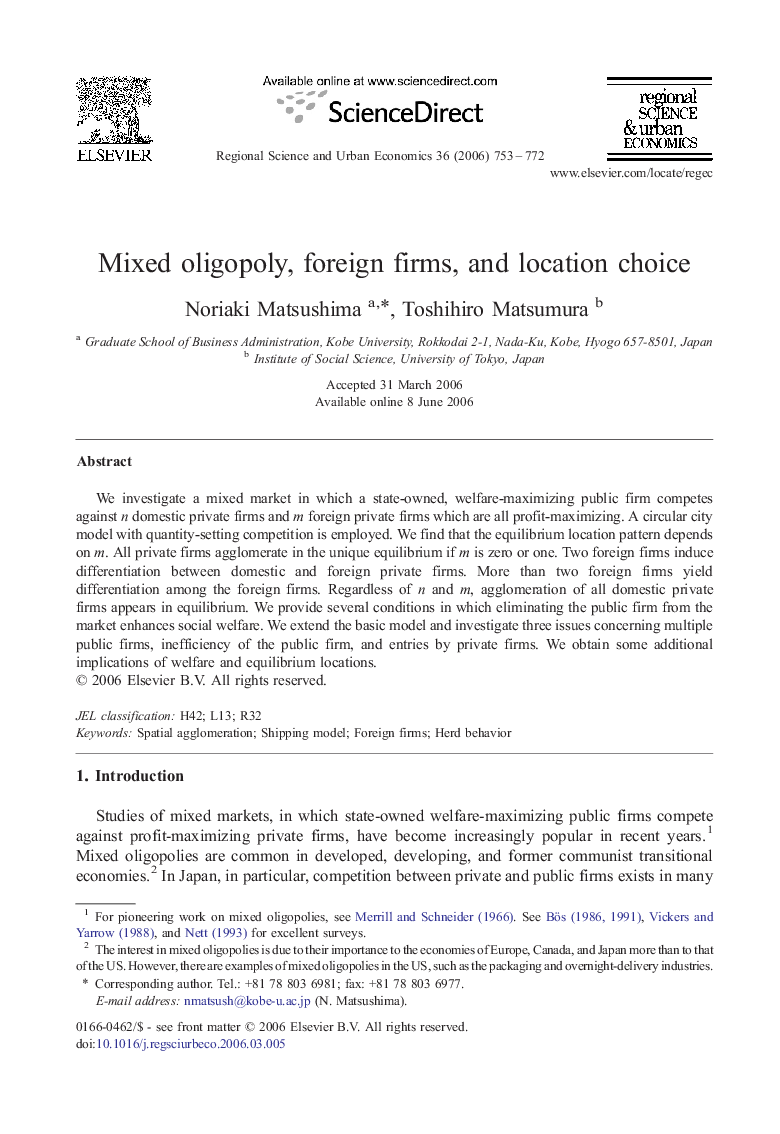| Article ID | Journal | Published Year | Pages | File Type |
|---|---|---|---|---|
| 983650 | Regional Science and Urban Economics | 2006 | 20 Pages |
We investigate a mixed market in which a state-owned, welfare-maximizing public firm competes against n domestic private firms and m foreign private firms which are all profit-maximizing. A circular city model with quantity-setting competition is employed. We find that the equilibrium location pattern depends on m. All private firms agglomerate in the unique equilibrium if m is zero or one. Two foreign firms induce differentiation between domestic and foreign private firms. More than two foreign firms yield differentiation among the foreign firms. Regardless of n and m, agglomeration of all domestic private firms appears in equilibrium. We provide several conditions in which eliminating the public firm from the market enhances social welfare. We extend the basic model and investigate three issues concerning multiple public firms, inefficiency of the public firm, and entries by private firms. We obtain some additional implications of welfare and equilibrium locations.
